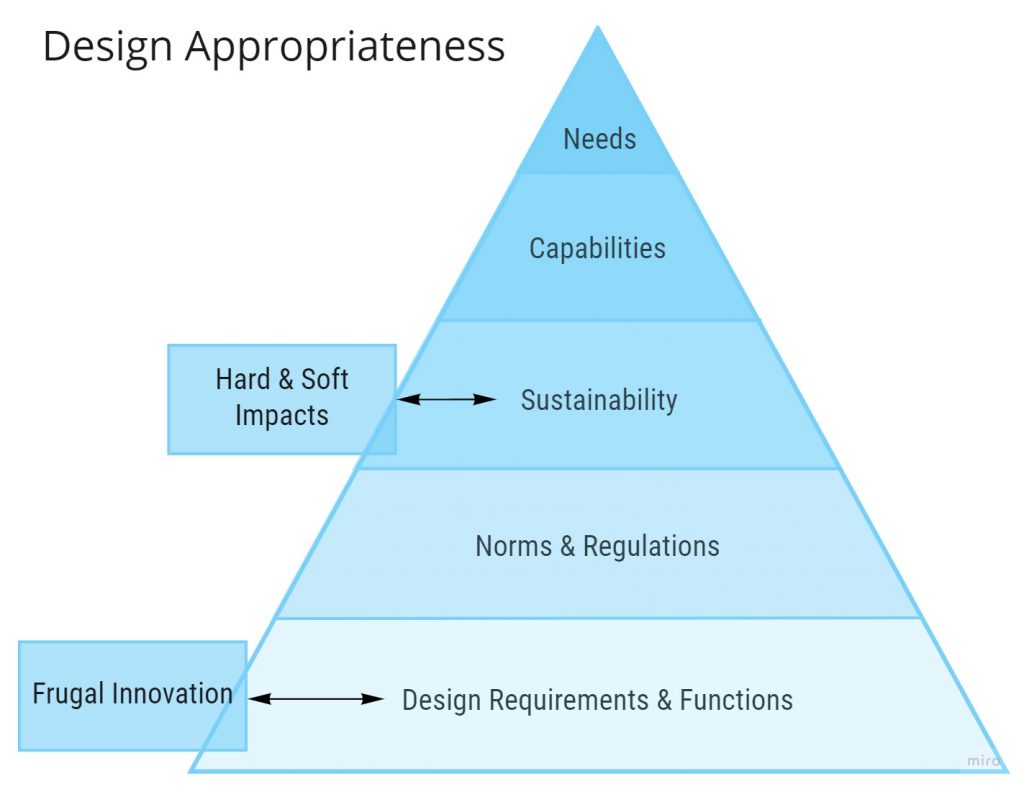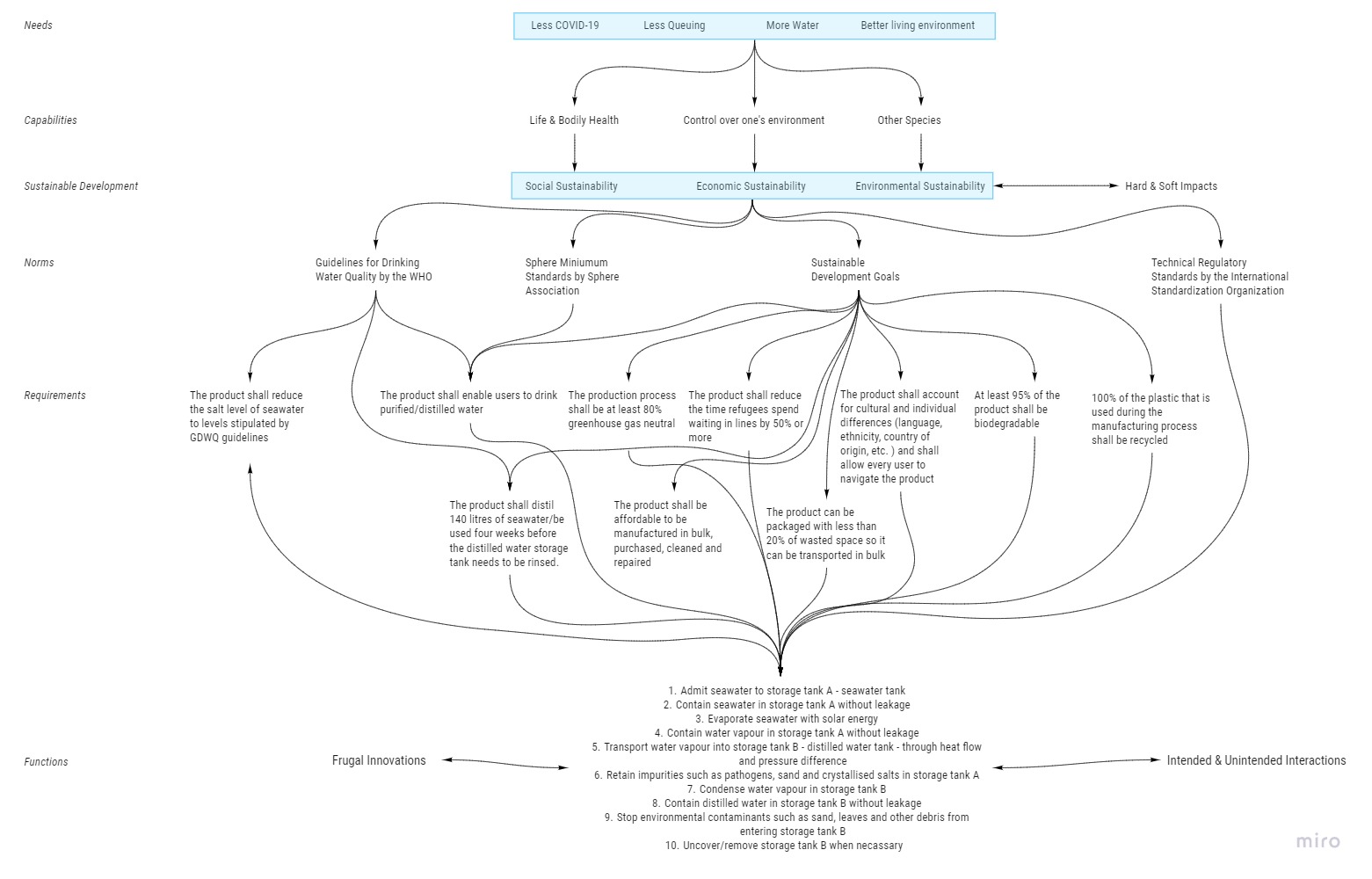Design Ethics
After discussing the theoretical framework of our research, of which a visual is portrayed on the right, we can focus on the appropriateness of our design – as a fundamental part of the entire project. Why is it suitable for our stakeholders? Most importantly, because it will create an additional opportunity for them to access drinking water – a scarce resource in Moria.

Human Diversity
It is vital to consider the physical characteristics of the design. Its weight makes direct usage possible for almost everyone (children under the age of twelve, people with disabilities, elderly (80+) excepted). This essential feature will partially create an environment where our stakeholder can secure his/her access to drinking water independently from volunteers or other organisations.
The benefits of our design are, however, not only restricted to the direct navigator/user of Solar Still. Also, children, the elderly and people with disabilities can indirectly benefit from our solution by receiving drinking water that has been distilled with it from the community members and local volunteers.
Solar Still is capable of distilling 140 litres of water before it has to be cleaned/rinsed. Our design is appropriate for Moria for two reasons considering this characteristic. Firstly, the camp is located next to a beach where its inhabitants have unlimited access to the virtually limitless water resources of the sea. Our stakeholders can use this water source for distilling drinking water without exhaustion of local resources. On the other hand, the unrestricted access to the sea will ensure that our stakeholder can clean Solar Still device regularly and adequately.
Context
COVID-19
In the refugee camp, our solution is also fitting for the tremendously long queues for drinking water. Lines in Moria are one of the major causes of COVID-19 transmission because people from different tent zones have to wait together for hours in lines for water. They have very close contact with one another over already highly infectious periods – people queue for up to eight hours. Our solution will reduce the duration of waiting times and length of queues for water. It will also minimise the ongoing infection rate – protecting the vulnerable population of Moria as a positive side-effect (children, elderly, persons with disabilities).
However, our solution’s appropriateness is not only restrained to COVID-19 transmission in the camp. It will also reduce the risk of on-site volunteers and other officials contracting the disease and spreading it outside of the community. SARS-CoV-2 infects susceptible people through airborne transmission. Our design innovation will ensure shorter exposure periods of on-site workers considerably because lines for handing out bottled water will become shorter – and hence, the contact with potentially infected people will be reduced for both refugees and workers/volunteers.
Our design is suitable for the environment of the Greek island too. Its construction and geometry will ensure that it can sustain its core functions on inclined, rocky surfaces in a Mediterranean climate (where stronger winds in spring and fall are not unusual).
The solution will also be appropriate in terms of the local environmental pollution – created by a malfunctioning waste disposal system with ten thousands of tons of plastic waste damaging the ecosystem of the surrounding area. The appropriateness of our design is ensured by its high durability (period of use: minimum ten years) on the one hand, and because it consists of 95% biodegradable material on the other hand.
Environment
Economy
The product also considers the current economic situation of Greece – accounting for the economic fluctuations caused by the global pandemic and the multiple waves of recession in the country. Our design is not only environmentally sustainable, but it will also be manufactured at very low cost. Hence, it will be a suitable solution for governments, local authorities or other investors to purchase. Ultimately, the design is ideal for Moria because it relies only on solar energy which solves two problems at a time. There is no electricity cost, and the device can be used in the refugee camp with no energy restrictions (if we had chosen to develop an electrical design, we should have faced the enormous problem of Moria being barely electrified since there is no current infrastructure in the camp).
We are aware of all these appropriateness aspects of our design only because of the thorough research we have done on our stakeholders and their living conditions. Combined with the aforementioned theoretical framework, of which an extended version can be found below, we have created a design innovation that is suitable for our stakeholders, their environment and their needs.

